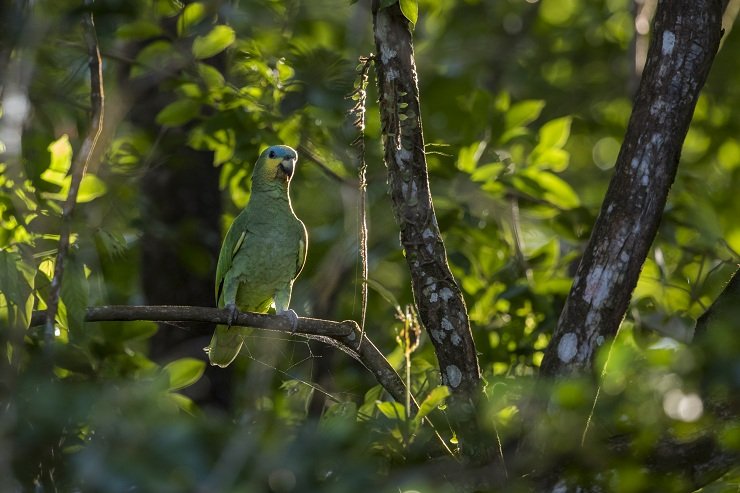
The very last Sunday of the decade heralded our final CBC – with group sizes limited to five persons. For the fifth year in a row, I was assigned the prolific and well-known Aripo Livestock Station at the foothills of Trinidad’s Northern Range. For birders who have visited T&T in the past, the livestock station has always been a staple site for several key species that would be fairly difficult elsewhere. In recent times, however, access has been severely restricted and I am completely thankful for my responsibilities in this regard.
Overzealous might be a word appropriate to describe me on a birding morning – arriving there well before sunrise. As I turned off the main road into the access road, I glimpsed a bird fly out from a tree above. Likely a Tropical Screech-Owl, but nothing definitive. It did not go on the list. A Ferruginous Pygmy-Owl that was fervently vocalizing however, was the first for the list.
As I drove slowly on the road bisecting the paddocks, now-awake Tropical Kingbirds and Tropical Mockingbirds began belting their dawn songs. A few Yellow-chinned Spinetails called nearby, and I managed to pick out the distant singular note of a White-headed Marsh Tyrant. The first visuals I obtained were of Black Vultures. Some would argue that the best adjective for the number of Black Vultures on that day to be “uncountable”. I made a conservative estimate of five hundred.
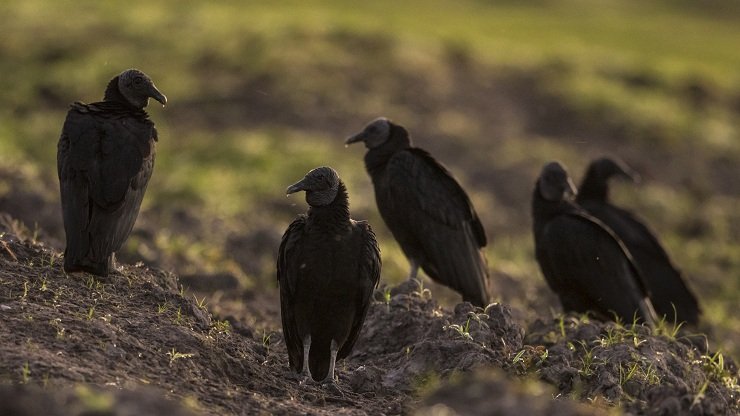
Part of the immense flock of Black Vultures.
While investigating a roadside patch, a couple wasps nailed me on my neck and head – almost scrambling my mental tally of Palm Tanagers, a Grey-fronted Dove, and Shiny Cowbirds. But birds (and the thoughts of birds) always prevail in my world. Safe to say no species was left behind! By this time, the rest of the group had arrived and we were busy counting Silver-beaked Tanagers darting across the roadway as well as a family group of Smooth-billed Anis.

Smooth-billed Anis are sociable birds and are rarely found alone.
Before moving away from the pastures, I stood in silence with my hands cupped around my ears. As if on cue, a lone Ruddy-breasted Seedeater called from the distant forest edge. I was happy that it was present but a bit disappointed there were no visuals. In a country where these birds are persecuted for their musicality, it’s probably best it remains hidden.
As the sun broke the treeline, we began birding the adjoining forest. Both White-bearded and Golden-headed Manakins were calling consistently, as well as Violaceous and Trinidad Euphonias. The constant twittering of Bananaquits distracted many an ear. Amidst the din, the strong metallic chink, chink of a migratory Northern Waterthrush sliced through with much clarity.
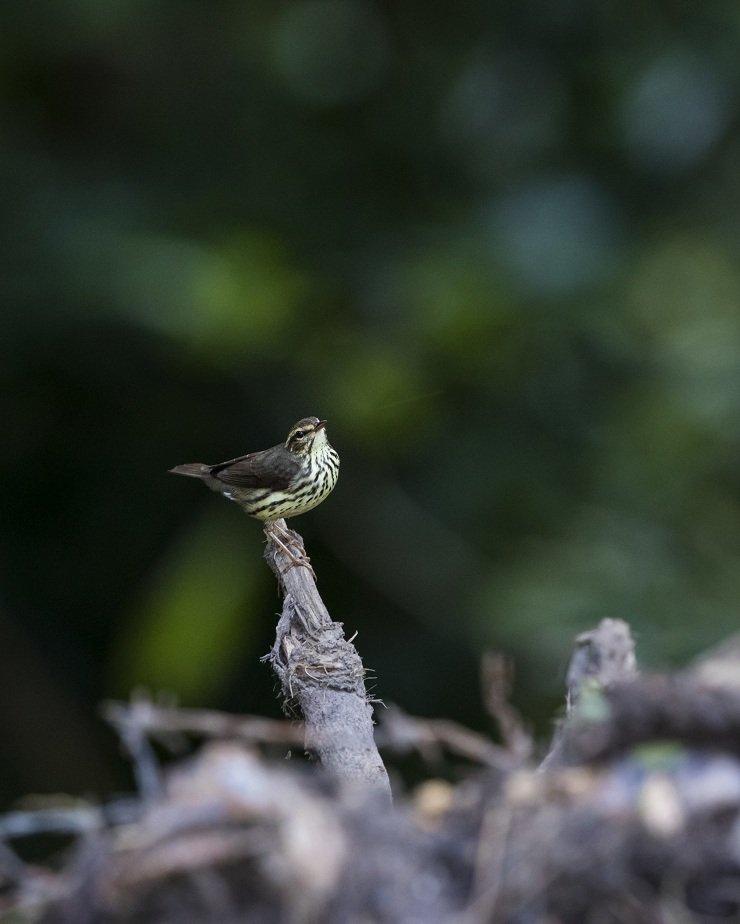
Northern Waterthrush
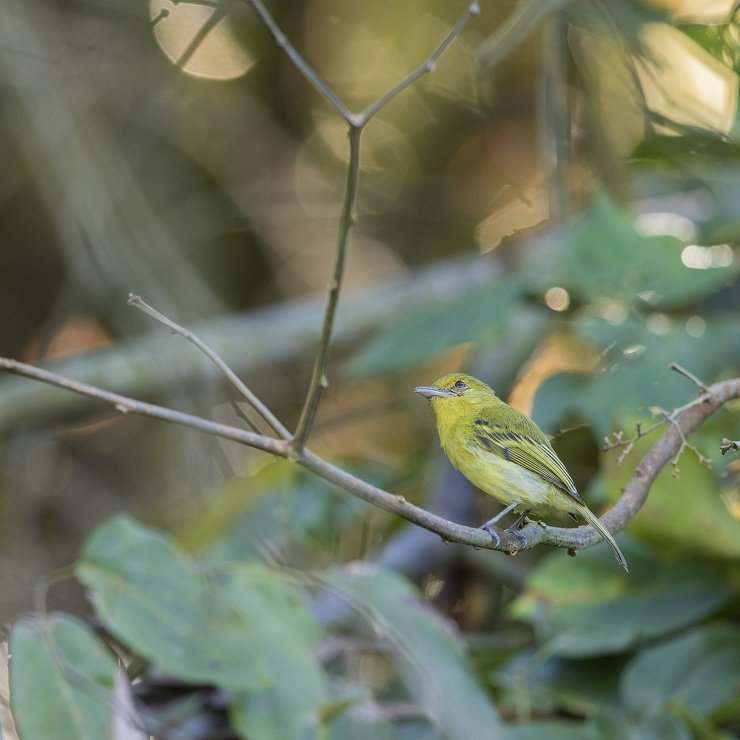
Yellow-breasted Flycatchers also were quite vocal just under the canopy.
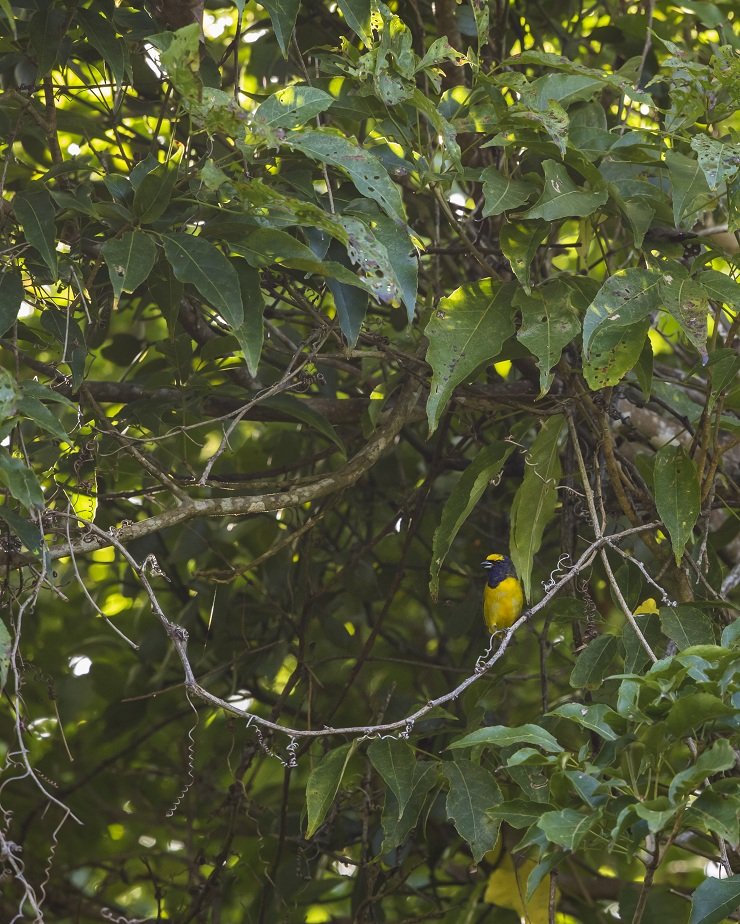
In spite of its name, the Trinidad Euphonia is not endemic to Trinidad.

Throughout the day, numerous pairs of Orange-winged Parrots would fly over. When perched, they are notoriously silent and extremely difficult to detect.
I was hearing another call in the distance and couldn’t quite put my finger on it. It sounded a bit like one of our trogons yet there was a shift in pitch. Racking my brain to figure out the source of the call, I was drawn to a memory from a few months ago when I had encountered a strikingly similar situation. That time, it turned out to be a Grey-headed Kite. I listened harder. Walking toward the source of the call, I heard it better – and it was indeed the alternate call of a Grey-headed Kite. When one individual flew into a nearby tree – there was no question.
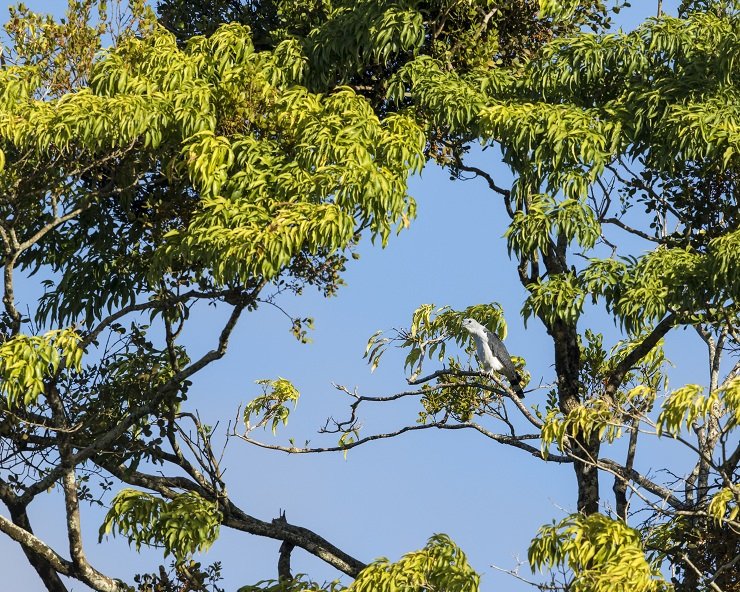
Grey-headed Kite
One of the members of the group pointed out that he’d been hearing the call of a Bran-colored Flycatcher. I was extremely grateful – I hadn’t seen one in about six or seven years, and had completely forgotten what they sounded like. Luckily, I was able to spot the source of the call albeit for a few seconds as it flew over the shrubbery in its characteristic undulating pattern.
As the day warmed, we moved closer to the edge of the Northern Range – the northernmost outcrop of the Andes mountains that runs east-west across the top of Trinidad. Expecting the rising air to bring raptors riding thermals, we parked our cars in the shade and waited. Getting our first Turkey Vultures and a couple species of hummingbirds feeding on some roadside flowers was pretty decent; catching a view of a Green-backed Trogon as it flew between perches was better.
Eventually, the group dispersed a little, and I was left alone – adding Short-tailed Swift and Grey-breasted Martin to the list when I heard a familiar call that was much too close to be ignored. As it had done in every previous count at almost the same time, a hulking Black Hawk-Eagle glided into view. This one almost at eye-level.
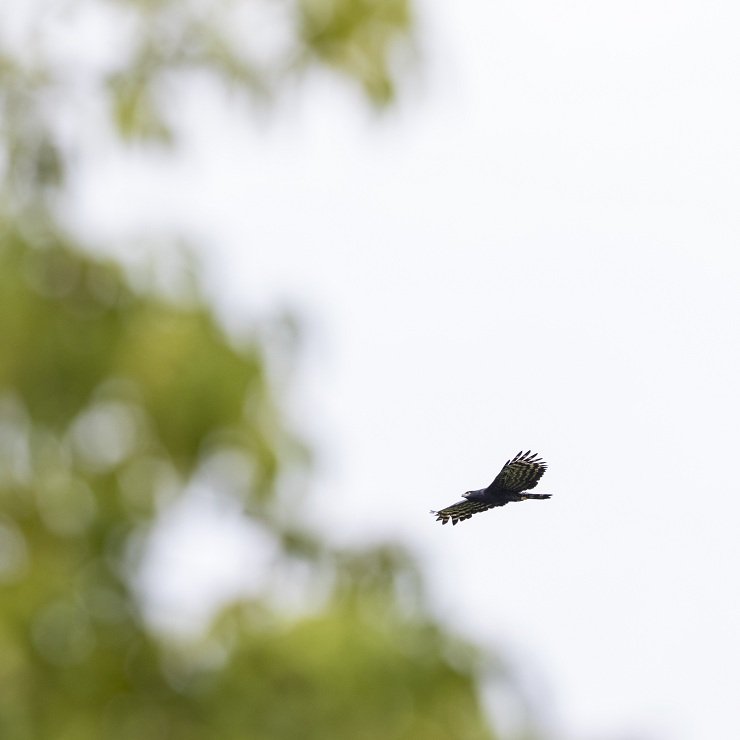
Black Hawk-Eagle
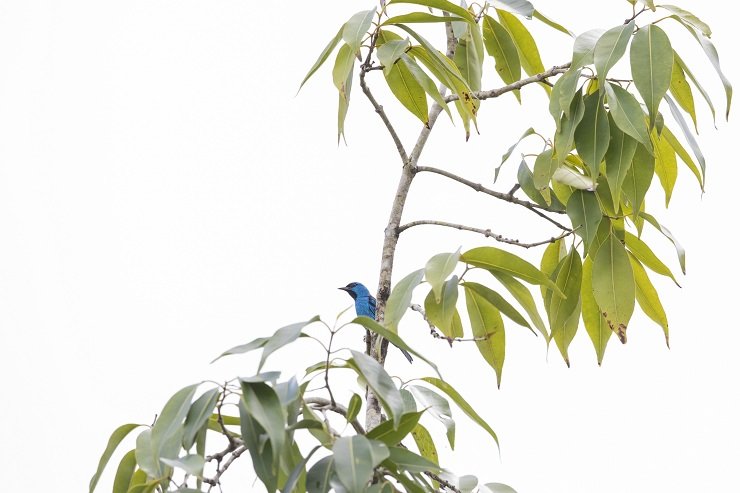
I squinted under the midday sun to discern the silhouette of a Blue Dacnis. Thankfully cameras can turn a silhouette into something usable!
The forest on both sides of a small stream also yielded Golden-crowned Warblers and a calling White-flanked Antwren while a pair of Lineated Woodpeckers screamed at each other from a nearby cecropia.
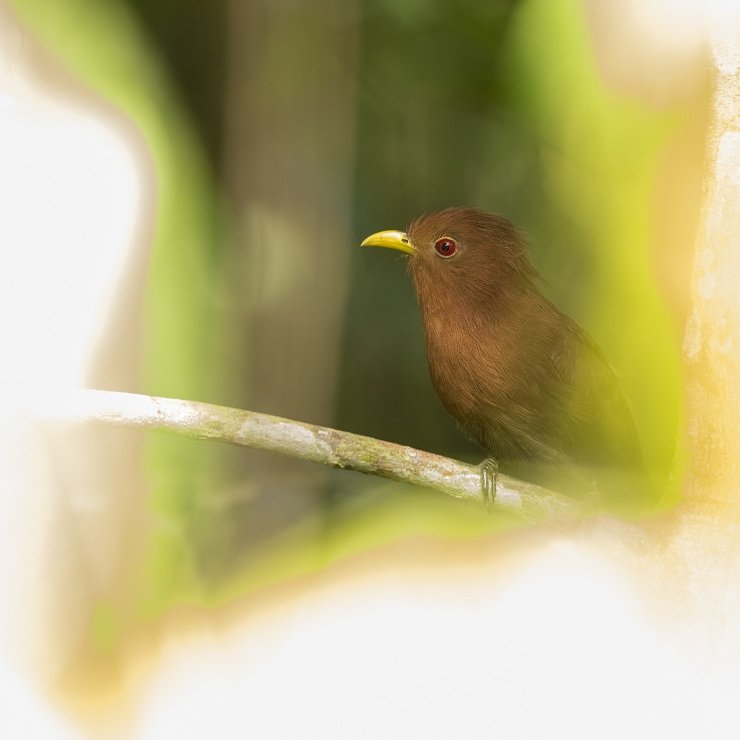
The bird of the trip for me was this Little Cuckoo that sat briefly in the dark understory.
By now we had already crossed 80 species, but there were a few holes in our list. If you checked my last post when I spoke about birding in Aripo Livestock Station, there are a couple staples that were still missing in action. A brief sojourn down another road even though the sun was at its unforgiving peak thankfully yielded views of Striped Cuckoo and a flying Savanna Hawk. A Boat-billed Flycatcher bleated its distinctive call from the treetops while we scanned the horizon for any other raptors.
Reluctant to throw in the towel, our little group continued combing each nook and cranny until well after 1pm. We came upon some ponds where a Pied Water Tyrant was stationed. A lone Grassland Yellow-Finch vocalized (frustratingly) from the opposite side of a bush over some water.
Nevertheless, by this time we were well and truly spent. With a single location left to inspect – the main drainage area – we still expected some additions to the list.
There was not a single frown on our scorched faces at this point, the main drainage ditch was replete with Southern Lapwings, a pair of Solitary Sandpipers and even a few Least Sandpipers! While it would have been great to stumble upon a snipe or two, a final tally of 93 species wasn’t bad for a little more than a half a day of birding.
You can view the full list of species here. Just ignore the map as I didn’t stop my track as I thought I did when I left the station.













Leave a Comment